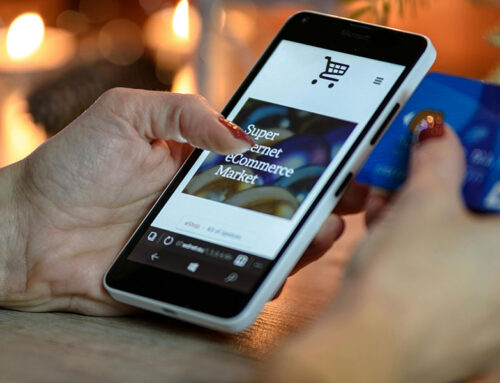Small Changes in your Ecommerce Website can make a Difference
Even the slightest tweak in your online store’s UX can impact its ability to turn a visitor into a customer.
How people are led to interact with your website and how it communicates with them play a pivotal role in your conversion rates.
It’s easy to underestimate the number of moving parts involved in getting your customer from the landing page to the transaction confirmation screen. It’s also easy to miss the many ways these parts can be streamlined.
In this article, I’ll be taking a look at some actionable strategies you can use to improve that all-important conversion rate.
1. Recover Abandoned Carts
This has to be my all-time favourite recommendation because of how incredibly effective it is. If you’re currently doing nothing to get customers who abandoned the checkout process back to complete their transaction, you’re in for a shock. One of the good kinds.
Let’s start with an interesting stat. The average cart abandonment rate is around 70%. There’s a possibility that three-quarters of your site visitors never go through with buying the items they’ve put in their shopping carts. Obviously, you should also be looking at reasons why this happens and how to avoid it, but we’ll get there later.
In this section, we’ll look at a method that results in an almost immediate spike in your conversion rate – abandoned cart recovery. This typically involves an email campaign reminding the potential customer that they have unfinished business with your store. The tone of this message is extremely important. You don’t want to come across as too pushy or use a hard sales pitch here.
For the first message, assume that there was a technical reason the sale wasn’t completed and ask the customer if they have any questions. Gently ask them how you can help them overcome whatever issue prevented the sale. This mail can be sent within an hour of the abandonment point.
A follow-up email can be a little more assertive. Now you can assume that the cart was abandoned because of the “usual” reasons that are listed in the Sleeknote article I linked to above. Sweeten the deal a bit for the customer and offer an added incentive, like free shipping.
A well-executed recovery process can have a huge effect on your conversion rate, with Peak Design’s case study showing that 12% of abandoned carts can be recovered.
2. Supplement Product Descriptions with Video
If you’re selling low-volume, high-margin products on your ecommerce site, investing in high-quality product descriptions is a must. Very few customers are going to drop $35k on an impulse buy, so get comfortable with putting together product description pages that really showcase your inventory in the best light.
High-resolution photographs are a no-brainer, and so is professionally written sales copy. But if you’re dealing with a very niche product that doesn’t “sell itself,” you’ll need to bring out the big guns. Video is an excellent way to supplement your standard product description tools, simply because of how engaging it is as a medium.
There are some pretty compelling statistics to back up video’s success as a sales tool. Online fashion retailer, Zappos, revealed a conversion rate improvement of between 6% and 30% on product pages that contained a video demo. Neil Patel references a survey where 84% of respondents said it was the product’s video description that convinced them to make the purchase.
Right, so you’ve been convinced that video is an excellent way to improve your conversion rates. What next? My advice would be to outsource the task to a production company. Not only will they be able to guide you through creating a compelling script, but they’ll also have the necessary expertise to tell the product’s story visually.
Involving reputable pros also ensures that high production quality. Remember that the video represents not only your product but also your brand’s reputation. It’s also important to know your target market so that you can strike the right visual and communication tone, another thing your production partners can help with.
LFA Capsule Fillers nails all of these angles with the video they produced for one of their flagship products. At only two minutes, the video is short, especially if you consider the complexity of the product. But it contains all the information a potential customer needs and presents it in a very elegant way.
3. Allow Guest Purchasing
Not all ecommerce stores benefit from forcing a customer to register an account before finalizing a purchase. Of course, if cross-selling is one of your main revenue drivers, it’s probably a good idea to make registration mandatory. Or, you might want to give some kind of incentive (such as free shipping) to encourage registrations.
What you should be considering here is how big a role customer loyalty and repeat purchases play in your sales strategy. If you think of every first sale as simply getting your foot in the door, this may not be a great option for you.
However, the fact is that many customers are experiencing account registration fatigue. Even allowing them to register via Facebook and Google is still a hassle. Many people are simply looking to buy what they need and be done with it. They don’t want to start another online relationship. Some of these people will even know that a first purchase puts them into a marketing funnel, and they have no appetite for it.
Allowing a guest to complete a purchase shortens the sales process, but even more importantly, it removes a mental obstacle that many of your potential customers will have. In one of the most famous case studies on the topic, an anonymous online retailer saw an astonishing 45% boost in conversions when they allowed guest purchasing.
Threadless has a beautifully designed checkout process, asking first for the customer’s shipping address and then for payment details. Throughout this experience, the user is only told via text message that the process will be simplified if they register or log in; there’s not a single point where they have to click past a “register/login” gateway.
4. Stay Hyper-Competitive with Automatic Repricing
Keeping your prices aligned with your competition is a critical part of running a successful ecommerce business. Obviously, the goal is to keep your profit margins as high as possible, while, at the same time, being close to the cheapest option on the market.
As you probably know, this is an ambitious balance to strike. There’s no small amount of research that goes into what your competition is charging, and updating your inventory prices can also be a bit of an administrative headache.
It goes without saying that the more competitive your selling platform is, the bigger the role intelligent repricing is going to play in optimizing conversions. If you’re selling on Amazon, where the platform drives traffic away from your listing towards cheaper alternatives, being the most affordable option is a matter of survival.
Fortunately, there are tools that help reduce the research and data entry legwork I was talking about earlier. In fact, Amazon repricing is a growth industry. Many software development companies are investing heavily in producing some seriously innovative tech to help keep sellers competitive.
If you want to take selling on Amazon seriously, automatic repricing isn’t a luxury anymore – it’s an absolute necessity.
5. Go the Extra Mile with Social Proof
The link between conversion and social proof is long-established. Testimonials on a product page can bring as much as a 34% spike in conversions. A staggering 97% of online shoppers say that reviews influence their decisions.
It’s simple; you need to prove to a potential customer that the product they’re considering is desirable. You need to show them that there are other people on the planet who made this purchase and were happy with their decision.
In my opinion, Modcloth sets the standard for incorporating social proof into their product pages. Have a look at any of their product listings, and you’ll see how elegantly this can be done.
The first thing they do right is to make a customer review summary extremely visible. It’s placed directly below a collapsed product “detail” text section. You hardly have to scroll before you can see the item’s aggregated star-rating and the number of customers who gave written reviews.
When you click on this UI element, it expands into a highly detailed review section where you can read what every customer had to say about their purchase. It’s visible without being intrusive, and it contains more than enough information without being overwhelming.
6. Optimise for Mobile Shopping
You need to enable your customers to buy from your site using mobile devices. Statistics on mobile commerce make a pretty compelling argument for this strategy.
The first step is to ensure that your site’s layout is responsive. If you’re forcing shoppers to engage with your desktop site regardless of their device, you may as well automatically redirect them to your competition. If your site doesn’t currently recognize the user’s device and deliver a UX customized for it, you will not convert that visitor into a customer.
The next step is to optimise load times. Mobile users are less patient than desktop users, says Neil Patel, and mobile devices typically take longer to load a website. Around three seconds. That’s all you’ve got. Forty percent of visitors leave a website if it takes longer than that to load.
For an example of a mobile ecommerce site that gets both of these things right, have a look at Mydeal Australia. It’s blazingly fast and delivers a UX that’s incredibly well-tailored for mobile shopping.
In Closing
You wouldn’t be reading an article about boosting conversion rates if you weren’t already somewhat convinced that you need to invest some time and money in your site’s performance. Thankfully, there are dozens of tweaks you can make to your online store to get the most out of your visitors. These six strategies are the tip of the iceberg.
Use your best judgment. Implement one or two that you think will work for you and monitor their impact. Don’t spread yourself too thin by implementing too many strategies at once, but try to always keep an eye out for what you can do next.
Good luck!






Leave A Comment